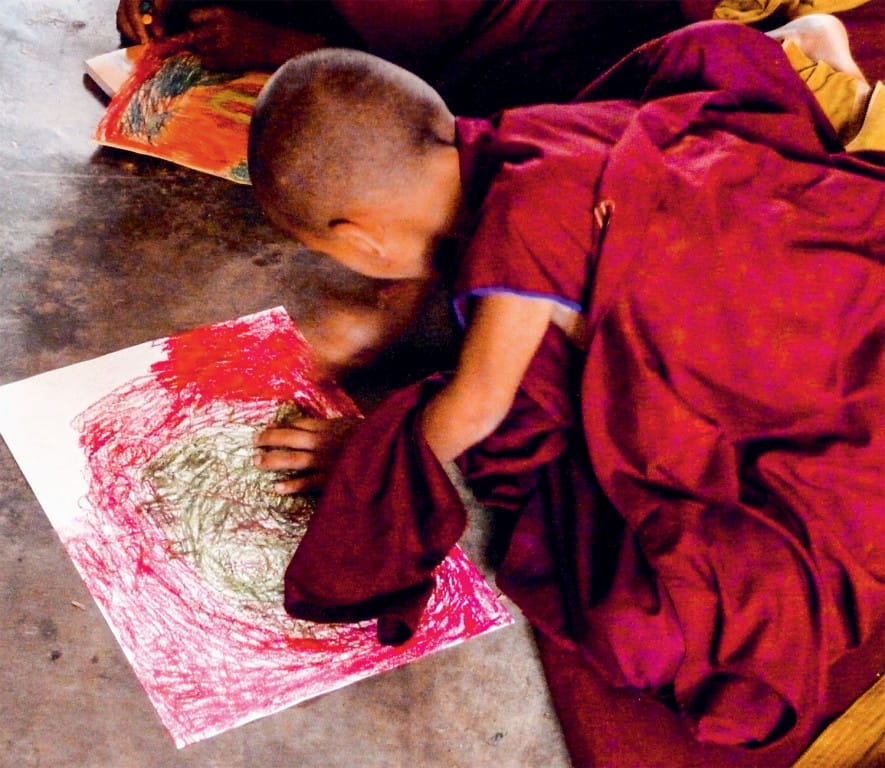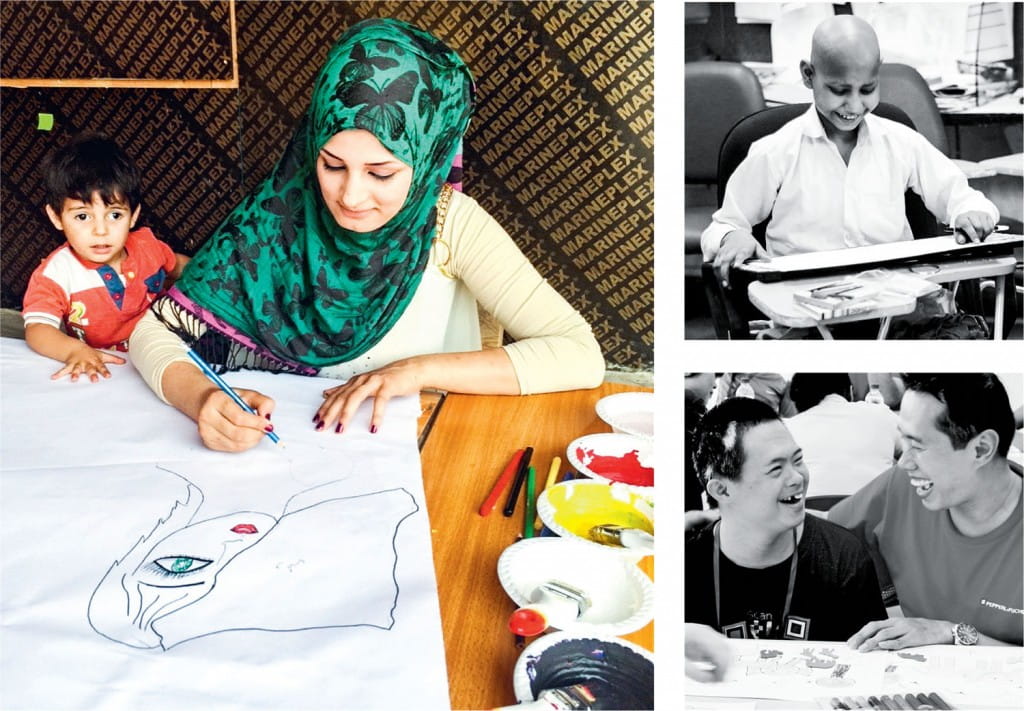
Following a massive earthquake in Nepal in April 2015, The Red Pencil worked with a Switzerland-based charity to send four art therapists to Kathmandu in May. The team provided trauma relief services through art therapy.
When words fail, Singapore-based charity The Red Pencil uses art therapy to understand, connect and rehabilitate local and overseas communities that have experienced trauma.
BY KAREN TEE
PHOTOS THE RED PENCIL
or the uninitiated, childish scrawls and doodles on a piece of paper can appear to be mere gibberish. But children who have experienced difficult circumstances such as war, natural disaster or family problems sometimes express themselves through these scribbles. When guided by an art therapist, these scribblings can be a form of catharsis, aiding the child on the road to recovery.
Singaporean art therapist Karen Koh saw this first-hand in 2014 when she took part in a humanitarian mission to Nepal organised by the international arm of Singapore-based art therapy charity, The Red Pencil. She remembers observing that most of the children drew pictures of incomplete families.
She says: “That community suffers from issues of broken families, unemployed parents and marginalised manual labourers. As such, the children were often neglected, with a common culture of either spouse abandoning the family.”
With repeated therapy sessions, Koh saw the children beginning to draw more hopeful pictures, depicting their future ambitions of becoming doctors and teachers to provide for their villages.
She says: “Despite their unfavourable life circumstances, it was heart-warming to witness these children being hopeful for their future.”
In a separate case of abuse involving an adolescent victim, Koh says the teen initially refused to talk to anyone, and only made powerful scrawls to express her strong emotions of anger.
Towards the end of the art therapy group sessions, Koh noticed a remarkable change in the teen’s outlook on life. “She was able to offer peer support to other members in the group and gave metaphors in conversations while creating her artwork, as though she was making sense of her own life experience,” says Koh.
HEALING THROUGH ART
The Red Pencil was founded in Singapore in 2011 by Belgian-born, Singapore-based art therapist Laurence Vandenborre to share the benefits of art therapy with hospitals and organisations.
The following year, she established The Red Pencil International to help children, adults and families caught in natural disasters and armed conflicts overseas.
“These are times when people face overwhelming situations for which they have no words,” says Vandenborre.
“If you imagine a child who is caught in a natural disaster – where lots of things are lost around the child, sometimes including family members – it can be difficult for the child to express those strong emotions.
Art, such as drawing, painting or kneading clay, is a very natural language for children.”
In a crisis, rescue and relief efforts are often focused on material necessities, such as food, water and shelter, she observes. But what is equally important, yet sometimes overlooked, is the victims’ emotional and psychological well-being.
This is precisely the gap that she hopes to fill. Since its founding, The Red Pencil International has worked with non-profit organisations like the Singapore Red Cross and Doctors Without Borders.
Some of the countries it has visited include Cambodia, Sri Lanka, Burma and Nepal.
It was also involved in relief efforts during Typhoon Haiyan in the Philippines in 2013, the 2008 Sichuan earthquake in China and, most recently, at a Syrian refugee camp in Lebanon.
Its Singapore arm is equally active, with about 150 registered art therapists. It runs an art therapy service at KK Women’s and Children’s Hospital and is in partnership with more than 55 welfare organisations, including the Singapore Children’s Society, The Salvation Army Singapore and the Breast Cancer Foundation.
BELOW FROM LEFT: A mother and child drawing together during a family afternoon at a Syrian refugee camp in Lebanon in September 2015; A child takes part in an art therapy workshop, facilitated by The Red Pencil, for children with cancer in India in June 2015; A benefi ciary and a volunteer share a light-hearted moment at a workshop for voluntary welfare organisation Movement for the Intellectually Disabled of Singapore in September 2015.

The organisation also offers scholarships to those who wish to pursue a master’s degree in art therapy at Lasalle College of the Arts in Singapore. Scholars are given the opportunity to volunteer at local programmes and go on humanitarian missions overseas.
Koh is one of the students who benefited from these opportunities, graduating from Lasalle in 2015 with The Red Pencil sponsoring her final year of school.
While art therapy is particularly useful for children, adults can benefit greatly from it too. Vandenborre herself has been volunteering with the Singapore Prison Service for the past 15 years, where she administers art therapy to some of the inmates.
She says: “Inmates too have experienced something very difficult and often come from a background where they have been judged repeatedly... Drawing helps them express more, even if they are not ready to talk about it.
Giving them that space without any judgement is in itself a huge healing platform and when they open up, you can see the transformation. I have found art therapy very powerful for them too.”
